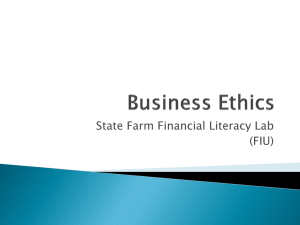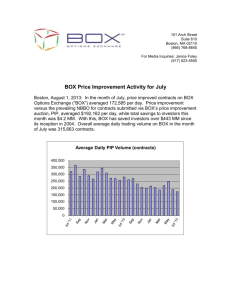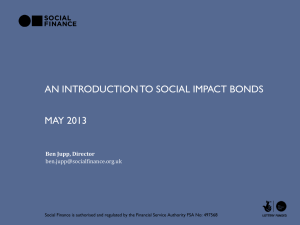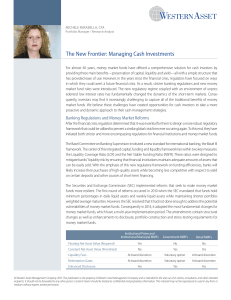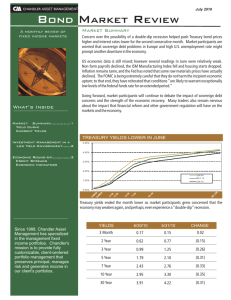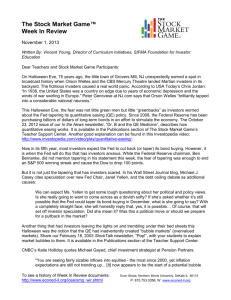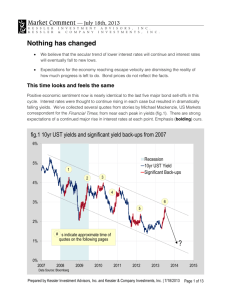Investment Update - BNY Mellon Wealth Management
advertisement
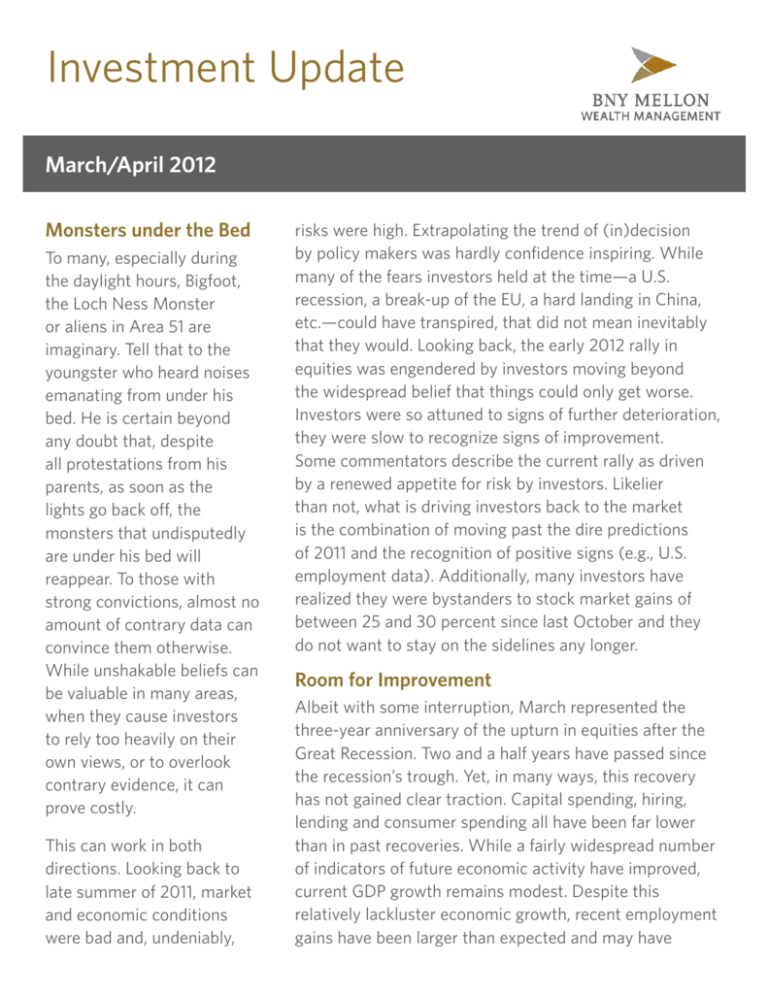
Investment Update March/April 2012 Monsters under the Bed To many, especially during the daylight hours, Bigfoot, the Loch Ness Monster or aliens in Area 51 are imaginary. Tell that to the youngster who heard noises emanating from under his bed. He is certain beyond any doubt that, despite all protestations from his parents, as soon as the lights go back off, the monsters that undisputedly are under his bed will reappear. To those with strong convictions, almost no amount of contrary data can convince them otherwise. While unshakable beliefs can be valuable in many areas, when they cause investors to rely too heavily on their own views, or to overlook contrary evidence, it can prove costly. This can work in both directions. Looking back to late summer of 2011, market and economic conditions were bad and, undeniably, risks were high. Extrapolating the trend of (in)decision by policy makers was hardly confidence inspiring. While many of the fears investors held at the time—a U.S. recession, a break-up of the EU, a hard landing in China, etc.—could have transpired, that did not mean inevitably that they would. Looking back, the early 2012 rally in equities was engendered by investors moving beyond the widespread belief that things could only get worse. Investors were so attuned to signs of further deterioration, they were slow to recognize signs of improvement. Some commentators describe the current rally as driven by a renewed appetite for risk by investors. Likelier than not, what is driving investors back to the market is the combination of moving past the dire predictions of 2011 and the recognition of positive signs (e.g., U.S. employment data). Additionally, many investors have realized they were bystanders to stock market gains of between 25 and 30 percent since last October and they do not want to stay on the sidelines any longer. Room for Improvement Albeit with some interruption, March represented the three-year anniversary of the upturn in equities after the Great Recession. Two and a half years have passed since the recession’s trough. Yet, in many ways, this recovery has not gained clear traction. Capital spending, hiring, lending and consumer spending all have been far lower than in past recoveries. While a fairly widespread number of indicators of future economic activity have improved, current GDP growth remains modest. Despite this relatively lackluster economic growth, recent employment gains have been larger than expected and may have reached the point where self-reinforcing positive feedback can develop—i.e., where increased hiring leads to improved sentiment, wage gains and increased continues, while various supply disruptions around the world have only tightened supply further. A weaker dollar also contributes to higher prices in real terms. But the largest component of the recent rise likely has been increased tensions in the Middle East. MAR-2009=100 Brent Crude Oil vs. Natural Gas 300 250 200 150 100 50 Mar-09 Aug-09 Jan-10 Natural Gas Jun-10 Nov-10 Apr-11 Sep-11 Mar-12 Crude Oil (Brent) As of 3/13/12. Source: Factset. spending. While this positive sequence is certainly not a foregone conclusion and could be disrupted by a new onset of risks, the trend is something investors should monitor. One of our more prominent current risks is the increase in oil prices. Several factors have contributed to the price increase. Strong demand By historical standards, these combined factors might cause us to be bumping up against the lower bounds of a price shock that could then affect consumer spending and cause demand destruction. We do not expect that outcome for a number of reasons. While rising gas prices represent a risk, fortunately some offsetting factors have reduced consumers’ dependence on oil. First, consumers are somewhat more resilient today. They have been paying down debt and, as noted above, sentiment and job prospects are improving. Because gas prices have been consistently on the high side, consumer behavior already has adjusted, as seen in travel patterns and attitudes toward fuel efficiency. Demographic trends also help mitigate the impact of higher oil prices, with an aging population driving fewer miles and new teenage drivers generally getting licenses later. At the same time, natural gas prices are diverging from oil prices and have reached a decade-low level, providing a more cost effective alternative for some corporations. While the U.S. today is probably better able to withstand oil price increases so far, significantly higher prices from current levels would be a clear negative. As was the case last year, a further spike higher likely would be damaging to global growth, which remains fragile, and diminish the chances of sustained high prices. Be Careful What You Wish For One area that only recently has reflected improving economic data is the government bond market, where yields remain near peak-crisis lows. Some of this reflects investor caution, as demonstrated by increased equity mutual fund outflows and bond fund © 2012 The Bank of New York Mellon Corporation. inflows. Also, many other risks surround us. As a result, many investors favor the perceived safety of bonds. Another factor supporting lower yields has been banking activity. While liquidity has improved and banks indicate they are more willing to make loans, demand has picked up only slowly. Therefore, banks recycle this liquidity into Treasury bonds, making money on the difference between what the Fed charges for overnight loans and current Treasury yields. According to Bloomberg Business News, commercial lenders purchased $78.2 billion of Treasuries and agency securities in January and February, compared with $62.6 billion in all of 2011. Finally, the Fed itself has been a major purchaser of Treasuries, through its programs to keep yields low in support of economic and housing market recoveries. Many investors firmly expect that the Fed will adamantly stay on hold, keeping short-term interest rates pegged near zero until late 2014, “no matter what.” On this issue, we think investors may be overlooking the important word “likely,” which was included in the Fed’s announcement about rate expectations. Were employment levels to continue to improve, we think the Fed is unlikely to wait two years to increase rates. If it did wait that long, market participants might start to price in a risk of increased future inflation to the yields of longer maturity bonds. While near-term inflation is unlikely, improved economic conditions, accelerating employment gains and wage growth, combined with excess liquidity, could be precursors. It may be reassuring to know that our parent in the next room will come running when we call out but, if we overreact, the monster under the bed could some day be of our own making. Christopher Sheldon



